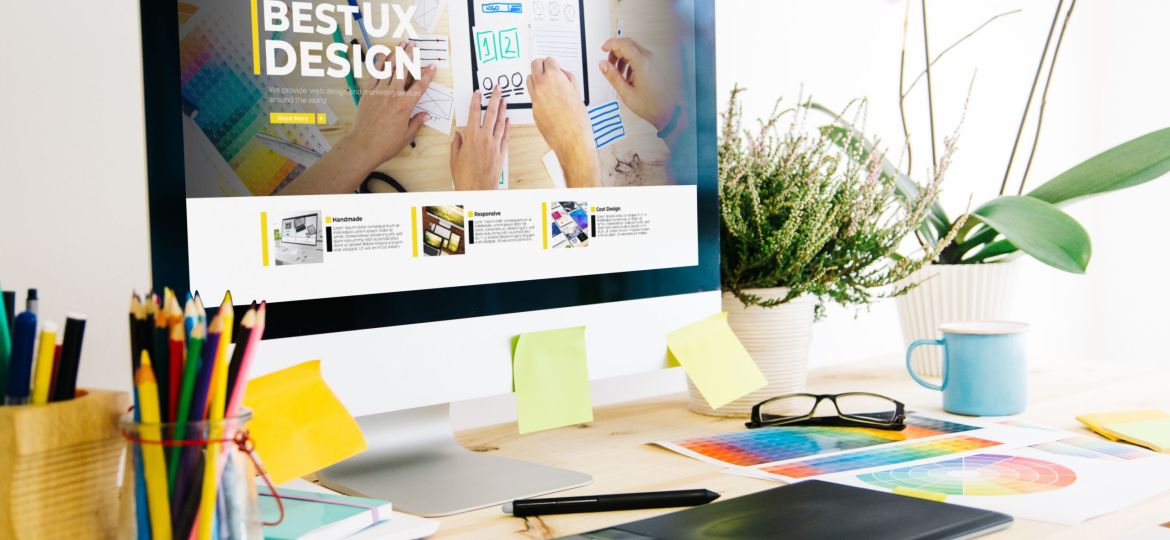
Introduction: Why WEB Design Mistakes Are Costly
Your website is often the first interaction potential customers have with your brand. But here’s the harsh truth: even the most beautifully designed site can fail if it makes critical mistakes. Poor user experience, confusing navigation, or slow performance can send visitors running—straight into the arms of your competitors.
The good news? These web design mistakes are avoidable. By recognizing and fixing them, you can build a website that not only attracts visitors but also keeps them engaged and drives conversions. Let’s break down the top 5 web design mistakes businesses make—and how you can avoid them.
1. Slow Load Times
The Mistake:
Nothing frustrates users more than a website that takes forever to load. In fact, research shows that 53% of users abandon a page that takes more than three seconds to appear.
The Fix:
- Compress and optimize images without losing quality.
- Use modern hosting solutions with faster servers.
- Minify CSS, JavaScript, and HTML code.
- Leverage caching tools and Content Delivery Networks (CDNs).
Fast websites not only make users happy but also improve your Google rankings, since site speed is a critical ranking factor.
2. Cluttered Layouts
The Mistake:
Some businesses try to say everything at once. The result? A cluttered homepage that overwhelms visitors. Too many pop-ups, banners, and conflicting colors create confusion, making it impossible for users to know where to focus.
The Fix:
- Embrace minimalist design with plenty of whitespace.
- Prioritize key information above the fold.
- Use a clear visual hierarchy (headlines, subheadings, images).
- Stick to a consistent color palette and typography.
Simplicity helps users focus on your message and encourages them to stay longer.
3. Poor Mobile Optimization
The Mistake:
We live in a mobile-first world, but many websites are still designed primarily for desktops. A site that looks perfect on a large screen may break, distort, or become unusable on mobile. That’s a deal-breaker when over 60% of web traffic comes from smartphones.
The Fix:
- Adopt responsive design that adapts to all screen sizes.
- Test your website across multiple devices and browsers.
- Ensure mobile menus are easy to navigate with one hand.
- Keep buttons large enough for thumbs to tap comfortably.
Mobile optimization isn’t optional anymore—it’s mandatory. A mobile-friendly site means happier users and higher conversions.
4. Weak or Confusing Calls to Action (CTAs)
The Mistake:
Even if your design is stunning, it won’t matter if users don’t know what to do next. Weak, hidden, or vague CTAs (like “Submit” or “Click Here”) confuse visitors and kill conversions.
The Fix:
- Make CTAs clear, bold, and action-oriented. (e.g., “Get a Free Quote,” “Book a Consultation,” “Start Your Project Today.”)
- Place CTAs strategically throughout your site, not just on one page.
- Use contrasting colors so CTAs stand out from the rest of the design.
- Keep the wording benefit-driven, focusing on what the user gains.
Your CTA should act as the guiding hand that moves visitors smoothly along the customer journey.
5. Complicated Navigation
The Mistake:
If visitors can’t find what they need quickly, they’ll leave. Complicated menus, too many dropdowns, or hidden pages make navigation frustrating. And frustrated users rarely turn into paying customers.
The Fix:
- Keep your menu simple with 5–7 main items.
- Use clear, descriptive labels (e.g., “Services” instead of “What We Do”).
- Add a search bar for quick access to content.
- Ensure the navigation is consistent across all pages.
Remember, users should reach their desired page in three clicks or fewer. Smooth navigation builds trust and reduces bounce rates.
Bonus Mistake: Ignoring Accessibility
While not in the top 5, overlooking accessibility is another common issue. A website that isn’t usable by people with disabilities limits your reach and risks compliance issues. Accessible design isn’t just ethical—it’s smart business.
Conclusion: Build Websites That Work, Not Just Look Good
A beautiful website is only effective if it delivers a seamless experience for users. By avoiding these common web design mistakes—slow load times, clutter, poor mobile optimization, weak CTAs, and bad navigation—you’ll create a site that builds trust, drives engagement, and converts visitors into loyal customers.
At This Guy Muto Concepts, we specialize in creating websites that blend stunning design with flawless functionality. From user-friendly layouts to optimized performance, we make sure your website isn’t just eye-catching but also business-driven.
👉 Is your website guilty of these mistakes? Let’s fix them and transform your online presence into a powerful business tool.

